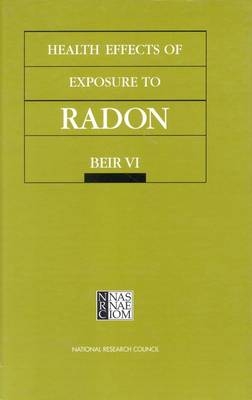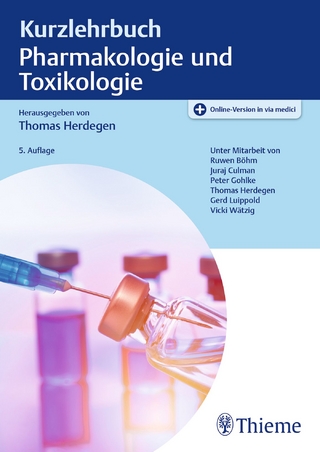
Health Effects of Exposure to Radon
BEIR VI
Seiten
1999
National Academies Press (Verlag)
978-0-309-05645-8 (ISBN)
National Academies Press (Verlag)
978-0-309-05645-8 (ISBN)
- Titel z.Zt. nicht lieferbar
- Versandkostenfrei
- Auch auf Rechnung
- Artikel merken
Provides a fresh assessment of exposure-dose relationships. This volume discusses key issues such as the weight of biological evidence and extrapolation from radon-exposed miners to the larger population - in estimating the risk posed by indoor radon. It also addresses uncertainties such as the combined effects of smoking and radon.
Radon progeny—the decay products of radon gas—are a well-recognized cause of lung cancer in miners working underground. When radon was found to be a ubiquitous indoor air pollutant, however, it raised a more widespread alarm for public health.
To develop appropriate public policy for indoor radon, decisionmakers need a characterization of the risk of radon exposure across the range of exposures people actually receive. In response, the BEIR VI committee has developed a mathematical model for the lung cancer risk associated with radon, incorporating the latest information from epidemiology and scientific studies.
In this book the committee provides a fresh assessment of exposure-dose relationships. The volume discusses key issues—such as the weight of biological evidence and extrapolation from radon-exposed miners to the larger population—in estimating the risk posed by indoor radon. It also addresses such uncertainties as the combined effects of smoking and radon and the impact of the rate of exposure.
The committee considered the entire body of evidence on radon and lung cancer, integrating findings from epidemiological studies with evidence from animal experiments and other lines of laboratory investigation. The conclusions will be important to policymakers and environmental advocates, while the technical findings will be of interest to environmental scientists and engineers.
Table of Contents
Front Matter
Public Summary and Executive Summary
1 Introduction
2 The Mechanistic Basis of Radon-Induced Lung Cancer
3 Models and Risk Projections
4 Health Effects of Radon Progeny on Non-Lung-Cancer Outcomes
Appendix A Risk Modeling and Uncertainty Analysis
Appendix B Comparative Dosimetry
Appendix C Tobacco-Smoking and Its Interaction with Radon
Appendix D Miner Studies
Appendix E Exposures of Miners to Radon Progeny
Appendix E Exposures of Miners to Radon Progeny
Radon progeny—the decay products of radon gas—are a well-recognized cause of lung cancer in miners working underground. When radon was found to be a ubiquitous indoor air pollutant, however, it raised a more widespread alarm for public health.
To develop appropriate public policy for indoor radon, decisionmakers need a characterization of the risk of radon exposure across the range of exposures people actually receive. In response, the BEIR VI committee has developed a mathematical model for the lung cancer risk associated with radon, incorporating the latest information from epidemiology and scientific studies.
In this book the committee provides a fresh assessment of exposure-dose relationships. The volume discusses key issues—such as the weight of biological evidence and extrapolation from radon-exposed miners to the larger population—in estimating the risk posed by indoor radon. It also addresses such uncertainties as the combined effects of smoking and radon and the impact of the rate of exposure.
The committee considered the entire body of evidence on radon and lung cancer, integrating findings from epidemiological studies with evidence from animal experiments and other lines of laboratory investigation. The conclusions will be important to policymakers and environmental advocates, while the technical findings will be of interest to environmental scientists and engineers.
Table of Contents
Front Matter
Public Summary and Executive Summary
1 Introduction
2 The Mechanistic Basis of Radon-Induced Lung Cancer
3 Models and Risk Projections
4 Health Effects of Radon Progeny on Non-Lung-Cancer Outcomes
Appendix A Risk Modeling and Uncertainty Analysis
Appendix B Comparative Dosimetry
Appendix C Tobacco-Smoking and Its Interaction with Radon
Appendix D Miner Studies
Appendix E Exposures of Miners to Radon Progeny
Appendix E Exposures of Miners to Radon Progeny
Committee on Health Risks of Exposure to Radon (BEIR VI), National Research Council
1 Front Matter; 2 Public Summary and Executive Summary; 3 1 Introduction; 4 2 The Mechanistic Basis of Radon-Induced Lung Cancer; 5 3 Models and Risk Projections; 6 4 Health Effects of Radon Progeny on Non-Lung-Cancer Outcomes; 7 Appendix A Risk Modeling and Uncertainty Analysis; 8 Appendix B Comparative Dosimetry; 9 Appendix C Tobacco-Smoking and Its Interaction with Radon; 10 Appendix D Miner Studies; 11 Appendix E Exposures of Miners to Radon Progeny; 12 Appendix E Exposures of Miners to Radon Progeny
| Erscheint lt. Verlag | 17.3.1999 |
|---|---|
| Verlagsort | Washington |
| Sprache | englisch |
| Maße | 152 x 229 mm |
| Themenwelt | Medizin / Pharmazie ► Medizinische Fachgebiete ► Arbeits- / Sozial- / Umweltmedizin |
| Studium ► 2. Studienabschnitt (Klinik) ► Pharmakologie / Toxikologie | |
| Naturwissenschaften ► Biologie ► Ökologie / Naturschutz | |
| ISBN-10 | 0-309-05645-4 / 0309056454 |
| ISBN-13 | 978-0-309-05645-8 / 9780309056458 |
| Zustand | Neuware |
| Haben Sie eine Frage zum Produkt? |
Mehr entdecken
aus dem Bereich
aus dem Bereich
Buch | Hardcover (2024)
Thomas Karow (Verlag)
CHF 79,95
Buch | Hardcover (2022)
Urban & Fischer in Elsevier (Verlag)
CHF 138,60


